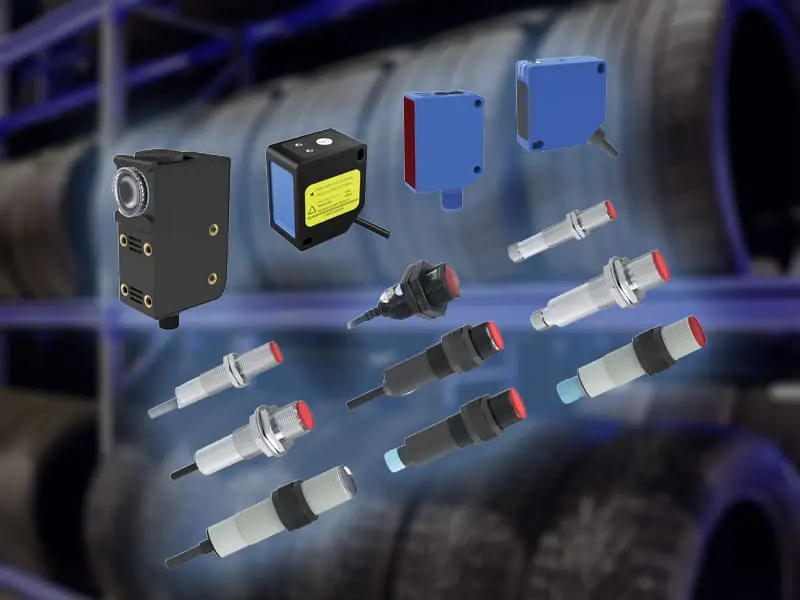How to Test Inductive Proximity Sensors
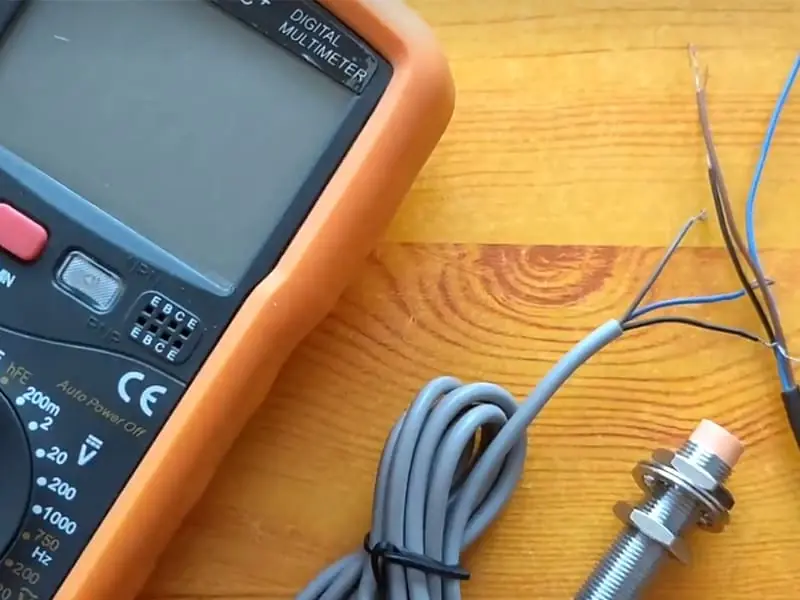
Test Inductive Proximity Sensor: A Comprehensive Guide
This article provides a detailed guide on testing inductive proximity sensors, covering everything from basic principles and preparation to troubleshooting common issues. Learn how to ensure the accuracy and reliability of these essential components in industrial automation.
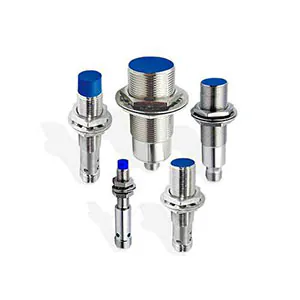
Introduction to Inductive Proximity Sensors
Operating Principle of Inductive Proximity Sensors
Inductive proximity sensors detect the presence of target objects through the principle of electromagnetic induction. When a metal object approaches the sensor’s detection range, the oscillating circuit inside the sensor senses the change in the electromagnetic field and correspondingly generates an electrical signal. These signals are processed and output as switch signals to indicate the presence of the target object.
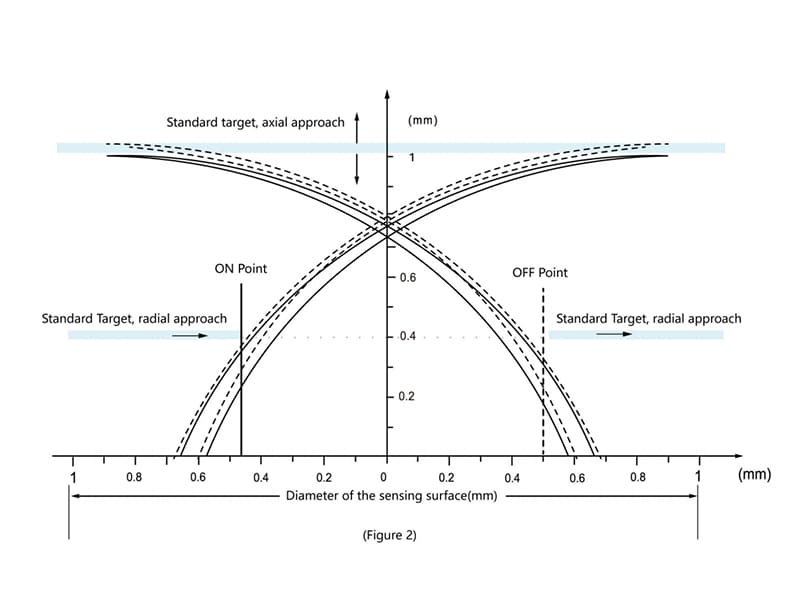
Features and Applications of Inductive Proximity Sensors
The features of inductive proximity sensors include:
- High Sensitivity: Able to detect very small metal objects, even their movements.
- High Reliability: With a simple operating principle, these sensors have low failure rates and can operate stably in various industrial environments.
- Fast Response: They are suitable for high-speed detection applications due to their quick response time.
- Easy to Install and Maintain: Usually designed to be compact and lightweight, making them easy to install and maintain.
- Strong Anti-interference Ability: Utilizing electromagnetic induction technology, they are highly resistant to interference from environmental factors like light and dust.
- Durability: Often made from corrosion-resistant materials, these sensors can withstand harsh industrial environments.
Inductive proximity sensors are widely used in various industrial fields, including but not limited to: automatic production lines, mechanical equipment, robotics, automotive industry, and security systems. They are mainly used to detect the position, counting, and limit control of metal objects.
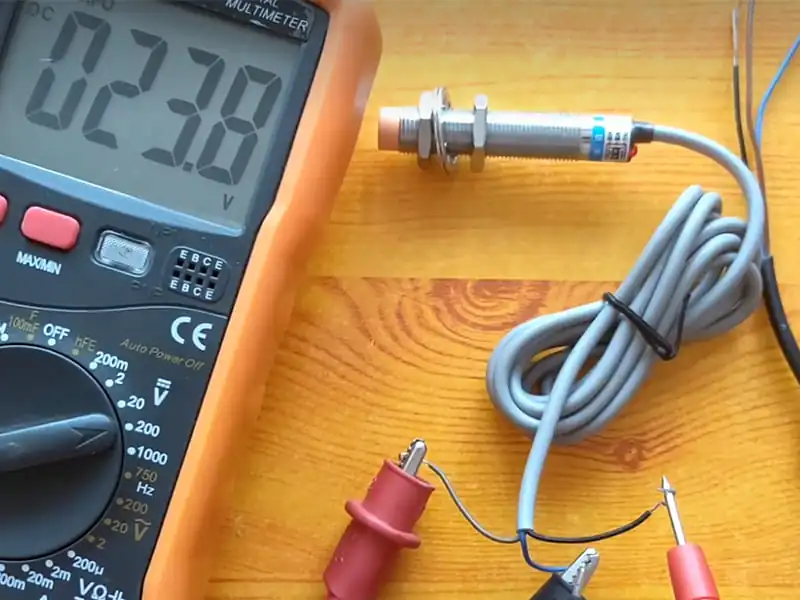
Importance of Testing Sensors
Regular testing of inductive proximity sensors is crucial to ensure their reliability and accuracy in practical applications. Through multiple tests and data analysis, potential issues in the sensors can be detected and eliminated in time, thus avoiding production stoppages and equipment failures.
Preparation Before Testing
Required Equipment and Tools
- Multimeter: For electrical testing of the sensor
- LED Indicator or Test Lamp: To observe the sensor output signal
- Connection Cables and Connectors: Ensuring a reliable connection between the sensor and testing equipment
- Test Object: Using a standard-compliant metal object for testing to ensure accuracy
Setting Up the Work Environment
- Ensure the work area is clean and free from dust and debris
- Ensure sufficient lighting for observing test results
- Ensure a stable power supply and provide necessary power support for the testing equipment
Testing Steps
Physical Inspection
Check the appearance of the inductive proximity sensor to ensure there is no apparent physical damage such as cracks, breaks, or wear. Then, check the connection points of the sensor to ensure all connectors and cables are intact, securely connected, and free from looseness.

Electrical Testing
Using a Multimeter to Test Voltage and Current:
Use a multimeter to measure the sensor’s input voltage and current, ensuring that they are within the specified range of the product’s technical parameters. For example, test if the sensor’s power supply voltage is 24V DC (according to specific sensor specifications) and if the current consumption is within the normal range.
Check the Sensor’s Output Signal:
Connect the sensor’s output terminals to an LED indicator or test lamp and observe if the sensor generates the expected switch signal when approaching a metal object. If the sensor comes with a built-in LED indicator, observe it simultaneously.
Functional Testing
Place the sensor on a clean and flat workbench in a proper position and secure it. Gradually bring the test metal object (such as a piece of iron or another regular-shaped metal object) close to the sensor’s detection face and observe the sensor’s response.
Observe and Record the Sensor’s Response:
Record the sensor’s response at different distances and check if it can stably and accurately detect the object within the set detection range.
Common Issues and Solutions
During the testing process, you may encounter some common issues such as missed detections or false alarms, unstable output signals, signal attenuation, or distortion. To address these problems, appropriate solutions should be applied, such as adjusting the sensor’s sensitivity, checking the circuit connections, replacing damaged components, etc. Here, I recommend that you contact the supplier immediately to receive professional technical support.
Bedook is committed to providing high-quality sensor products. Our advantages include:
- Comprehensive Range: Whether it’s standard or special application sensors, we can meet your needs.
- Price Advantage: By optimizing production processes, we provide high-quality products at competitive prices.
- Customization Capability: We can customize according to customer requirements, offering tailored solutions.
- Technical Innovation: With a professional R&D team, we continually drive technological innovation to ensure our products remain industry-leading.
- Global Service: Our products are sold to lots countries and regions around the world, with a comprehensive after-sales service system to ensure customer satisfaction.
- Quality Assurance: We ensure timely delivery of bulk orders and strictly control quality to provide reliable assurance for customers.
Bedook not only has outstanding performance in the field of sensors but also in continuously optimizing customer service to provide comprehensive support. Looking forward to your inquiries, Bedook is your trusted partner.
Explore Bedook: Your Trusted Sensor Manufacturer
At Bedook, we specialize in designing, developing, and manufacturing a comprehensive range of proximity sensors and switches. Our extensive product lineup includes:
- Inductive Proximity Sensors
- Capacitive Proximity Sensors
- Photoelectric Sensors
- Ultrasonic Sensors
- Solid State Relays
- Various Accessories
With over 10,000 detailed product variations and a robust R&D team, we take pride in our ability to meet your unique requirements with tailored solutions and reliable performance.
Whether you’re seeking off-the-shelf products or customized designs, Bedook offers the expertise and production capacity to ensure your satisfaction.
Get in Touch Today!
We value your interest in our products and warmly encourage you to send us an inquiry. Let us help you find the perfect sensor solution for your application.
Thank you for considering Bedook—your trusted partner in innovation and quality manufacturing. We look forward to collaborating with you!



